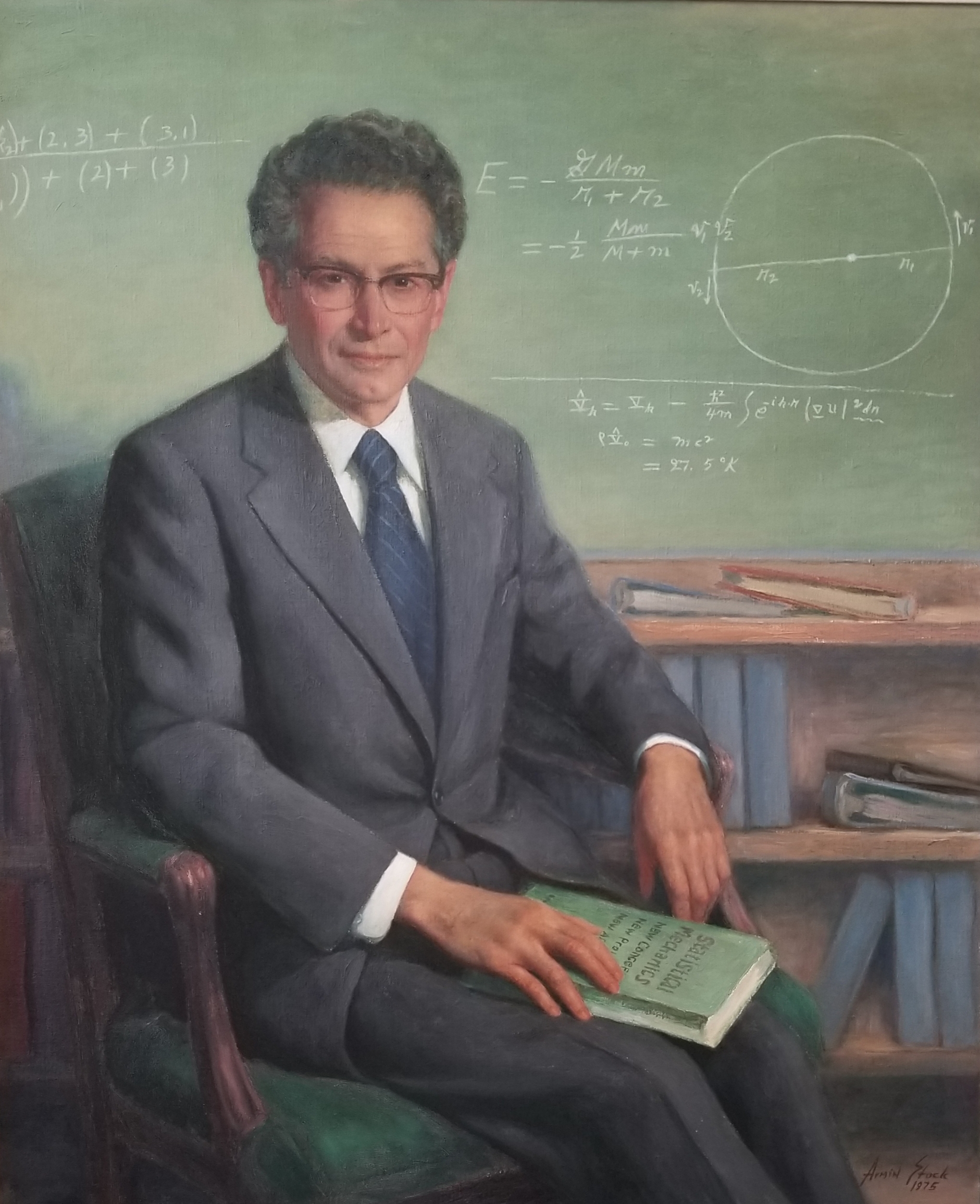Eugene Feenberg (1906-1977), a world-renowned theoretical physicist, was Wayman Crow Professor of Physics at Washington University and a Member of the National Academy of Sciences. Born in Fort Smith, Arkansas, he was awarded A.B. and M.A. degrees in 1929 from the University of Texas. In 1933, he received his Ph.D. at Harvard University, where his thesis contained the first statement and proof of the optical theorem for quantum scattering. He held positions at Harvard and the University of Wisconsin, followed by a two-year Fellowship at the Institute for Advanced Study. From 1938 to 1946 he was a member of the faculty of New York University. During World War II, he worked at the Sperry Gyroscope Company and contributed to the development of radar.
In 1946, Feenberg joined the faculty of Washington University, where he worked and taught for the rest of his life. For many years, he shared an office with Henry Primakoff. Their 1948 paper drew attention to the astrophysical importance of inverse Compton scattering. A member of the National Academy of Sciences, Feenberg won wide acclaim for pioneering works in several branches of theoretical physics. He was among the first to recognize the charge independence of nuclear forces and associate it with the internal symmetry called isospin. He played a major role in the formulation of the nuclear shell model, and he made innovative contributions to perturbation theory and other approximation methods in quantum mechanics. He was the founder of the theory of correlated basis functions, one of the most fruitful approaches to first-principles, microscopic description of quantum fluids and other strongly-interacting many-particle systems. Through his remarkable dignity and integrity, his incisive intellect, and his path-breaking achievements, Eugene Feenberg has had a profound influence on the development of computational quantum many-body theory. As a continuing memorial, his colleagues and former students established the Feenberg Medal for Many-Body Physics, which has been awarded since 1985 at the International Conferences on Recent Progress in Many-Body Theories.

